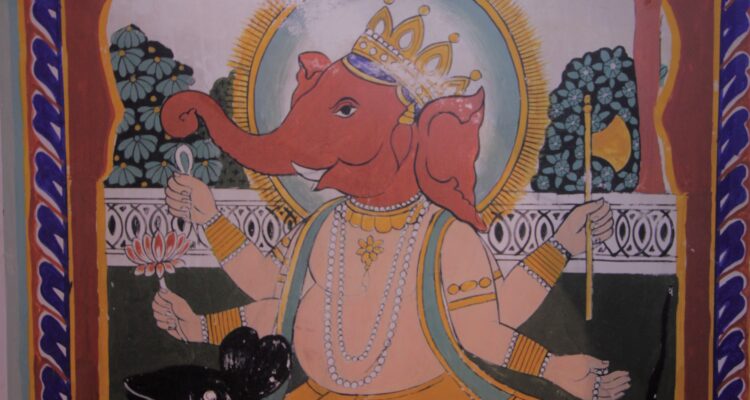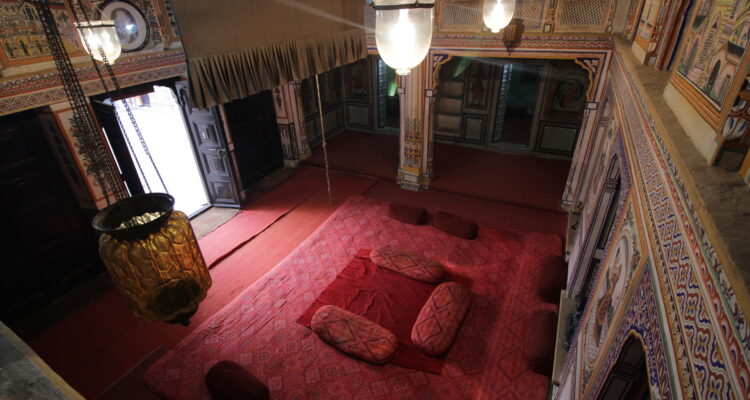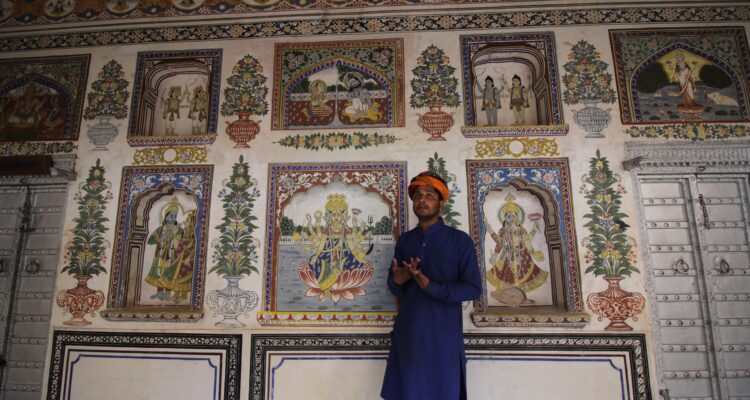Just how Orhan Pamuk’s ‘My Name is Red’ experiments with your imagination playing with the myriad hues, shapes, ideas, stories, and colours of the Ottoman Empire; Shekhawati enforces you to envision the tales of the most revered silk route period by carefully imbibing the murals on the walls. These murals are the display of the enormous wealth of the traders who chose to flaunt their prospering wealth through the massive display of artworks on the walls of their Havelis.
The frescos are inspired by different art forms, particularly the Mughal and the Rajput school of design. The frescos are built with great details, narrating stories from Indian mythology — Krishna, Ganesh, Brahma with three heads, Kartik, leading to the chariots, horses, birds, and other animals used for commuting in the stories. The inner walls were particularly devoted to the religious stories as they were majorly used by the women of the houses. This also explains the rules of patriarchy enjoying its high self-esteem to confine women within the boundaries of their Havelis, while their husbands were away working as traders.

The imagination of the artists even amalgamated the modern means of transport to the age-old stories. It is said, that one of the traders sent an artist to observe a train when it came to India, for him to replicate the same in his work. We also find hot air balloons, telephones and other airplanes making a heroic entry in the traditional art themes. The cultural amalgamation displaying the highlights of tradition, modern inventions, and imagination can be seen in the form of an open gallery. No matter where you stand in the region, there is a mural speaking right into your eyes and retelling the tale that it lived magnanimously. 
Shekhawati linked the route coming from Agra-Delhi to Surat and other parts of Gujarat. Shekhawati is spread across three significant districts of Jhunjhunu, Churu, and Sikar and gets its name from Rao Shekha, the ruler who established the Shekhawati region in 1471 ad. The Page 3 traditional business families have their origin in this region, namely, Poddar, Bajaj, Khaitan, Birla, Modi, Piramal, Goenka, and Parasrampuriya. The huge art gallery kept on expanding till the British colonial rules shifted the trading centers to Calcutta, Bombay, and Chennai. After the trade opportunities shifted to these places – the local traders moved out, but they continued building Havelis and commissioning fresco work on the wall, to maintain a home away from all the chaos.

Now the Havelis standstill reiterating the tales of their days of glory but there is a sense of loneliness looming in the wind. Some of them are so dilapidated that they need immediate attention, some are holding their breath sensing a day of calamity and some are just surviving. With inherited legacy comes great responsibility and like so many places in India, this historical site also needs restoration project on an urgent basis. The frescos are fading, the colours are losing their vibrancy and with them, the essence of the place is losing its soul bit by bit.
